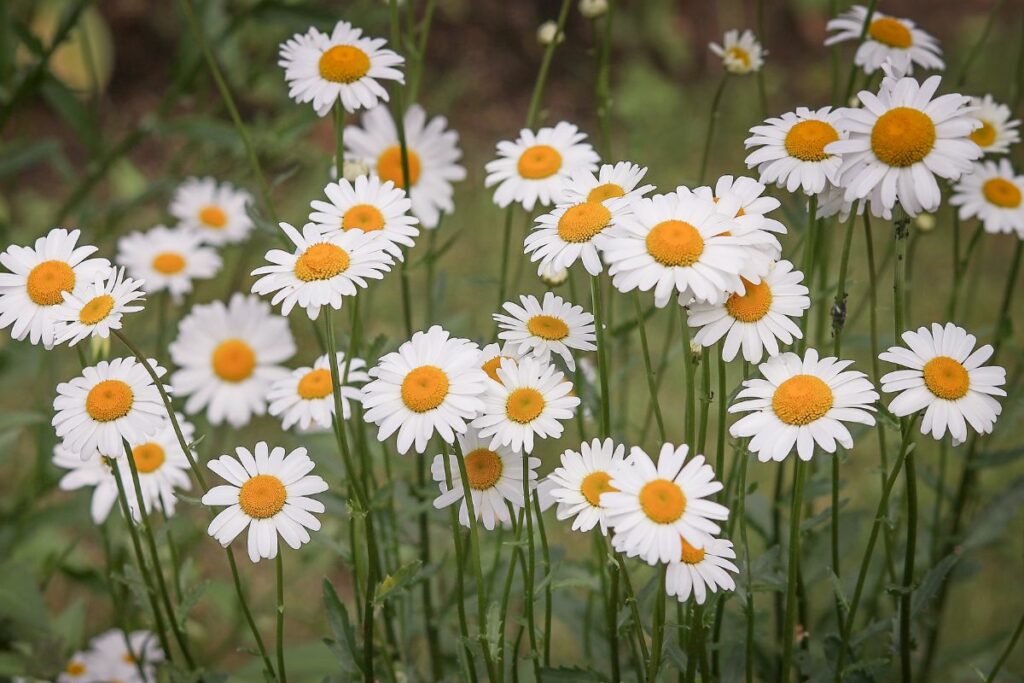There are three specific periods of the year when you can trim Shasta daisies – each offering its own unique benefits.
Trimming Shasta Daisies In Autumn
Similar to other perennial flowers like coneflowers and buddleias, Shasta daisies can also be trimmed in autumn after the blooming period is finished. This not only tidies up your garden but also facilitates the new sprouts to emerge in the spring by removing dead leaves and withered blooms. An additional benefit to this practice is that it minimizes the chance of pest infestations and disease by eliminating potential breeding grounds.
Wait for the initial frost to pass, then use a clean, sharp pair of pruning shears to shear the plants down to a few inches above the soil. If a harsh winter is expected, a layer of mulch can be laid over the area to safeguard the roots.
Conversely – or in case you forget – you can trim them once winter ends. “By waiting till spring, the seeds can provide birds with food during the winter,” points out gardening expert Tony O’Neill. “But make sure to do it before new buds form,” he adds.

Trimming Shasta Daisies In Spring
Shasta daisies start developing new growth in the springtime. By late spring or early summer, you can give them a “Chelsea chop.”
This method involves reducing about a third of the plant just above a pair of strong leaves. This technique results in a denser, bushier habit and increased flowering. If you have multiple plants, staggering the timing of the chop can help extend the overall blooming period.
“After trimming, ensure your plants are thoroughly watered, particularly on hot days,” recommends Anna Ohler, proprietor of the Bright Lane Gardens nursery.
Trimming Shasta Daisies In Summer
The only maintenance necessary during the summers is deadheading. This process involves removing the wilted blooms all through the flowering season to extend the blooming period and promote more flowers, according to horticulturist Tony.
Regularly inspect the plants and trim off any withered flowers you come across. If you desire to gather the seeds once they are ripe, leave a few flowers untouched – a frequent oversight when deadheading.
On top of trimming Shasta daisies, it’s also recommended to divide the plants to avoid overcrowding and promote robust growth. Perform this task every three years in autumn, once you’ve given the plants a trim. This will result in revitalized plants and an enhanced floral display for your garden.

